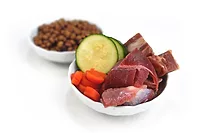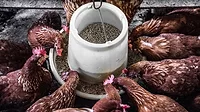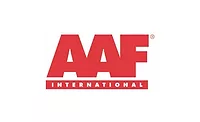Market Research
Aquafeed and Aquaculture Additives: A game Changer in the Food and Nutrition Industry

Increasing consumption of seafood, given its potential protein benefits, has been fueling the demand for aquafeed and aquaculture additives over recent years. As per OECD-FAO Agricultural Outlook 2022-2031 estimates, fish consumption worldwide, exclusive of Africa, is anticipated to surpass 21.4 kg per capita by 2031. The sluggish fish consumption rate in African countries could be attributed to an imbalance in the demand-to-supply ratio as a result of the expanding population and growing food insecurity.
This has raised alarming concerns across African nations, where nutrition and hunger are some of the primary issues authorities are focusing on. This has further brought in the need for aquafeed and aquaculture additives as invaluable resources for human health development.
Aquafeed and aquaculture additives provide high protein and Omega 3 content in meals. These are nutritive ingredients that are supplemented in considerable amounts for specific purposes, say for example, improving the quality of fish or preserving the physical and chemical quality of diet. The growing incorporation of these additives is estimated to enhance the consumption of fish for a human meal. As per NOAA Fisheries statistics, more than 50% of all seafood available for human consumption comes from aquaculture.
The growing investments in aquaculture feed production by several governments are likely to complement the positive growth trajectory of the aquafeed and aquaculture additives market over 2022-2030. Egypt, for instance, has observed significant local and international investment in aquafeed production in the ensuing years. It has been reported that if the growth in aquafeed production continues at an appreciable pace, the production could reach 2.2 million metric tons yearly by 2025, in Egypt.
Catfish Farming: A Profitable Avenue for Aquafeed and Aquaculture Additives Market
Catfish farming business is garnering momentum worldwide, mainly due to its benefits for humans in the form of ornamentals, fish food or more. Fish food is known to be low in calories, can lower blood pressure, reduce the risk of CVDs and is filled with healthy nutrients like Omega-3, Vitamins D and B2, and fatty acids. Reports suggest that including boiled or baked catfish in a person’s diet can promote overall human health. This unarguably calls for including highly effective additives in catfish feed.
Catfish feeds are a blend of mineral and vitamin supplements that deliver adequate amounts of vital nutrients and digestible energy. These are generally plant-based and include major ingredients like soybean meal, corn and its byproducts, wheat byproducts and cottonseed meal. Various researchers are investing in experimenting with catfish feeds to support their overall functioning.
For example, researchers from the Aquatic Animal Health Research Unit of the U.S. Department of Agriculture’s Agricultural Research Service’ explored the use of frass produced from black soldier fly larvae in the diets of channel catfish. The study was aimed at evaluating the influence of dietary inclusion of frass at various levels on feed utilization, growth performance and mineral composition of channel catfish. It was found that adding levels of frass from 100 grams per kilogram to 300 grams per kilogram increased the overall weight gain in the species.
Catfish Farming in the U.S. to Generate Lucrative Opportunities for Aquafeed and Aquaculture Additive Manufacturers
It should be noted that catfish growers in the U.S. recorded sales of $421 million in 2021; out of this count, 97% of all U.S. farm-raised catfish was farmed in Arkansas, Mississippi, Louisiana and Alabama. This presents significant prospects for the catfish industry in the country, pushing the growth of the aquafeed and aquaculture industry. Research studies are speculated to contribute substantially to this impending expansion.
The researchers at Land-grant Universities, for instance, are conducting research that supports the catfish industry in the country with support from the USDA’s National Institute of Food and Agriculture. This would help them build a more resilient food system in the nation.
Problem: Arkansas catfish producers have lost nearly $1.68 million worth of catfish to toxic algae episodes. This has urged researchers in the state to work toward aquaculture programs and initiatives to regulate algae episodes in the pond.
Solution: The University of Arkansas at Pine Bluff’s aquaculture program introduced an algal monitoring program. In 2021, approximately 2,800 algal samples were processed, with pond owners advised to treat algae. This approach saved nearly $200,000 worth of catfish in the state.
Recently, it was reported that the U.S. catfish industry has undergone a technological disruption by shifting from pure channel catfish to hybrids of channel catfish and blue catfish—this innovation currently accounts for 75% of the overall production.
Some of the prominent advantages offered by hybrids include better feed conversion, faster growth, increased tolerance to crowded conditions, higher carcass yield and low oxygen levels. In addition to this, hybrids are also more resistant to some of the common pathogens on catfish farms.
What’s Next in the Aquafeed and Aquaculture Additives Industry?
The demand for seafood protein is anticipated to grow profusely, as is the consumption of seafood, which is influencing the global market outlook for the aquafeed and aquaculture additives industry. A study by Global Market Insights Inc. expects the market share to surge beyond $117 billion by 2030.
Europe is projected to stand tall in the global business, representing an expanding market for fast and processed foods and an inclination toward insect-based protein. Additionally, the increasing use of additives to reduce the impact of bacterial diseases in fish and shrimps could proliferate the industry demand. To illustrate, the aquafeed additive from Adisseo – Bacti-nil, is known to avert disease and promote growth in trials with Nile tilapia and Pacific white Shrimp.
Looking for a reprint of this article?
From high-res PDFs to custom plaques, order your copy today!








